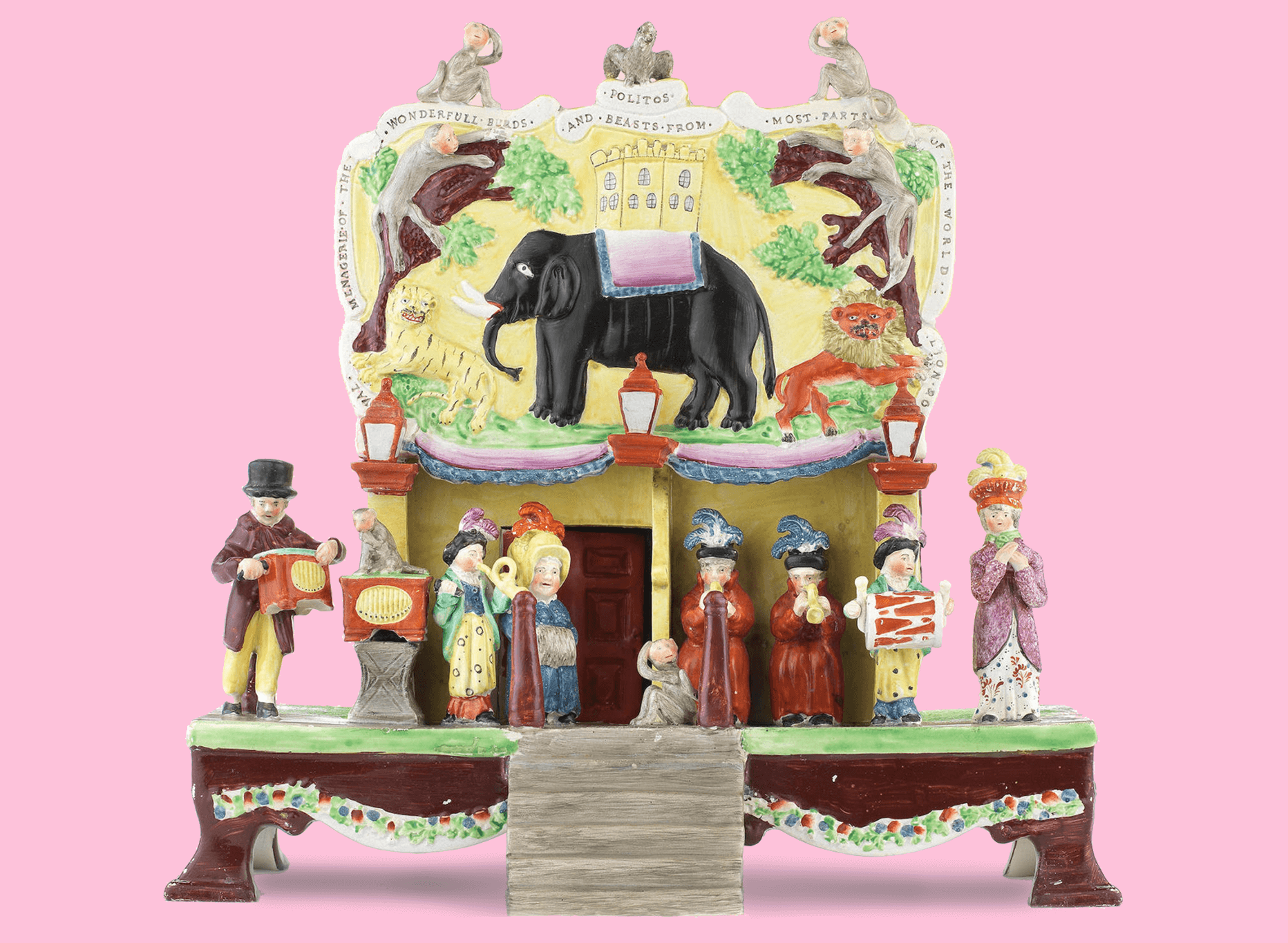Cymon and Iphigenia
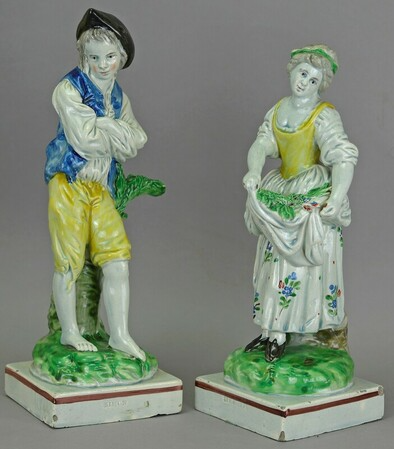
These figures portray Cymon and his beloved, Iphigenia. In 1700, John Dryden published their story as a poem in his Fables, Ancient and Modern. The tale has ancient roots for Cymon is the hero of The Decameron, a novella by Giovanni Boccaccio written in around 1350. The narrative tells that Cymon’s aristocratic father considers him a dolt and sends him to live and work with his slaves in the countryside. In this environment, Cymon becomes increasingly coarse. One day, he comes upon highborn Iphigenia, slumbering in a field. He is so smitten by her beauty that his noble bearing surfaces, and his father reinstates him. Iphigenia is promised to another, but this tale of wars and abduction in the name of love ends happily with Cymon and Iphigenia united for life.

Ralph Wood introduced these figure models into the Potteries in the 1780s. Shortly after, Ralph Wedgwood, a plagiarist extraordinaire, copied them, apparently using the same molds. This pair, titled SIMON and IPHIGENIA in a manner that is typical of Wedgwood, was made circa 1795. The figures have an impressive presence, with Simon standing 9.5 inches tall.
More Figures of the month

Rare figure of Victorian card playing
At first glance, this may appear to be an ordinary arbour figure. But upon closer inspection, one can see these three people are engaged in a game of cards.
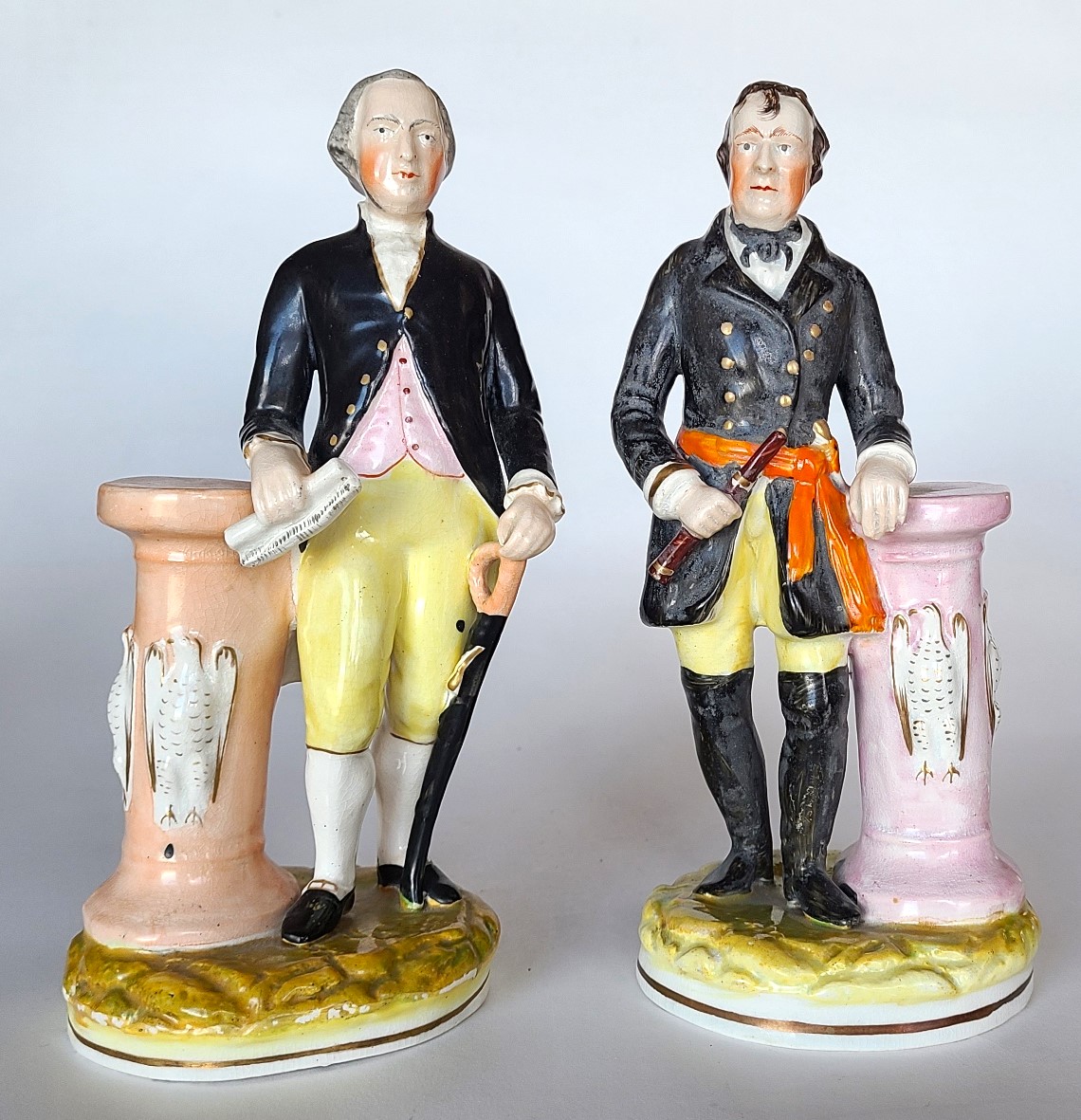
George Washington and Zachary Taylor
This is a very rare pair of figures portraying George Washington and Zachary Taylor. They stand approximately 9” and 9.1″ tall, and date to approximately 1850.
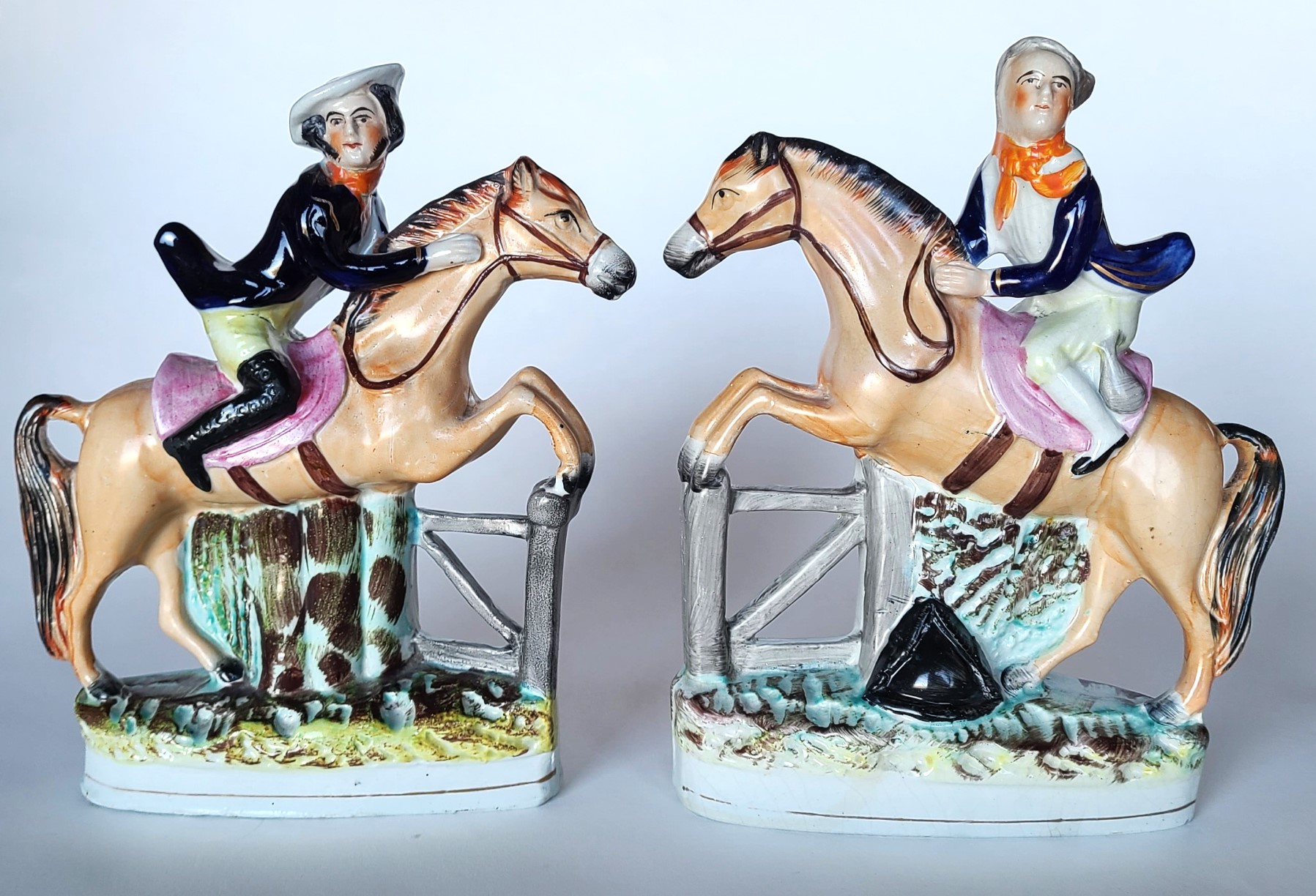
Tam O’Shanter and John Gilpin
This is a very rare pair of figures portraying Tam O’Shanter and John Gilpin. They stand approximately 8.6″ and 9.0″ tall, and date to approximately 1845.
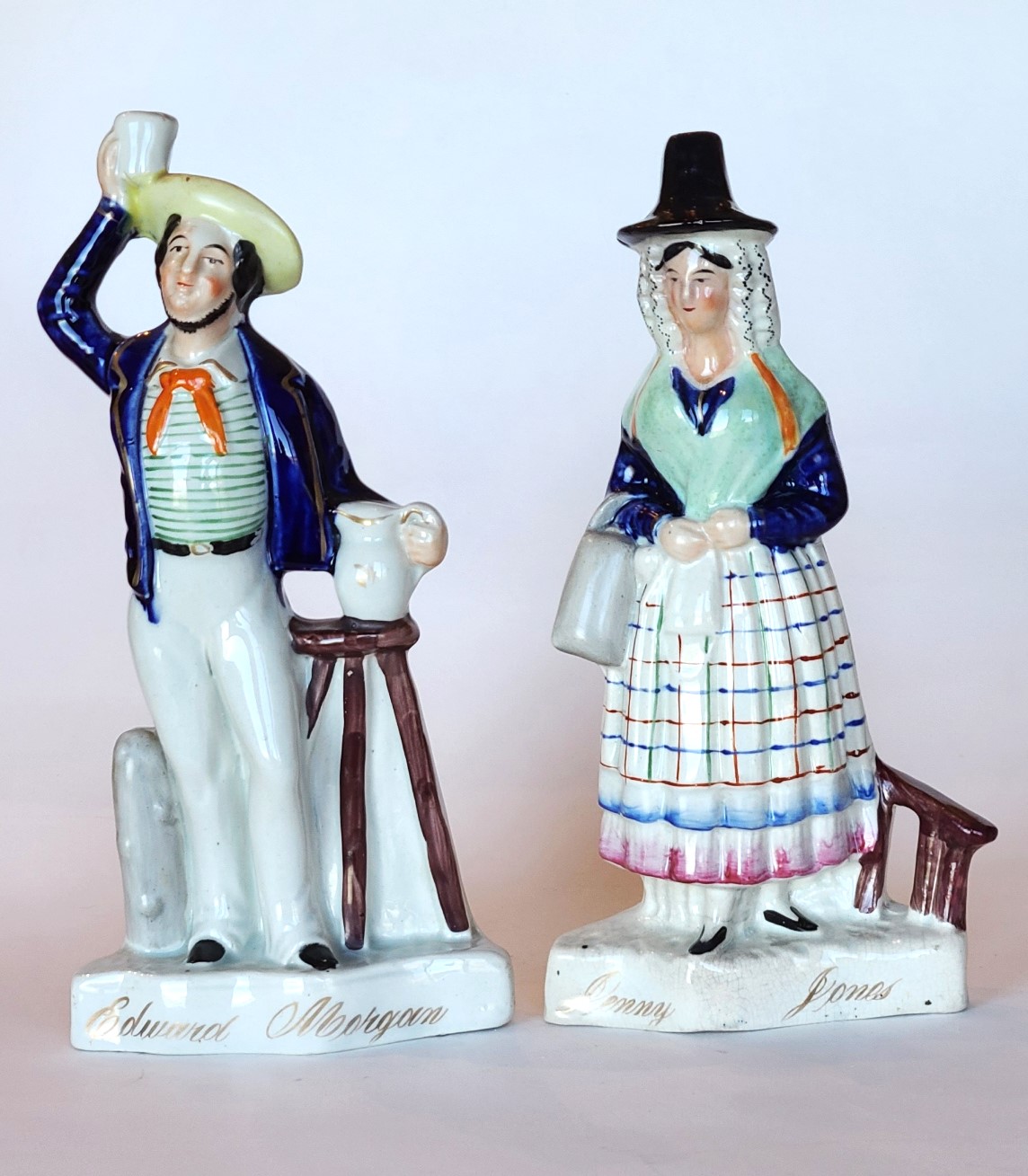
Edward Morgan and Jenny Jones
This is a rare pair of figures portraying Edward Morgan and Jenny Jones, titled with gilt script. The romantic tale of Morgan and Jones was set to music in 1825 by Charles James Mathews.
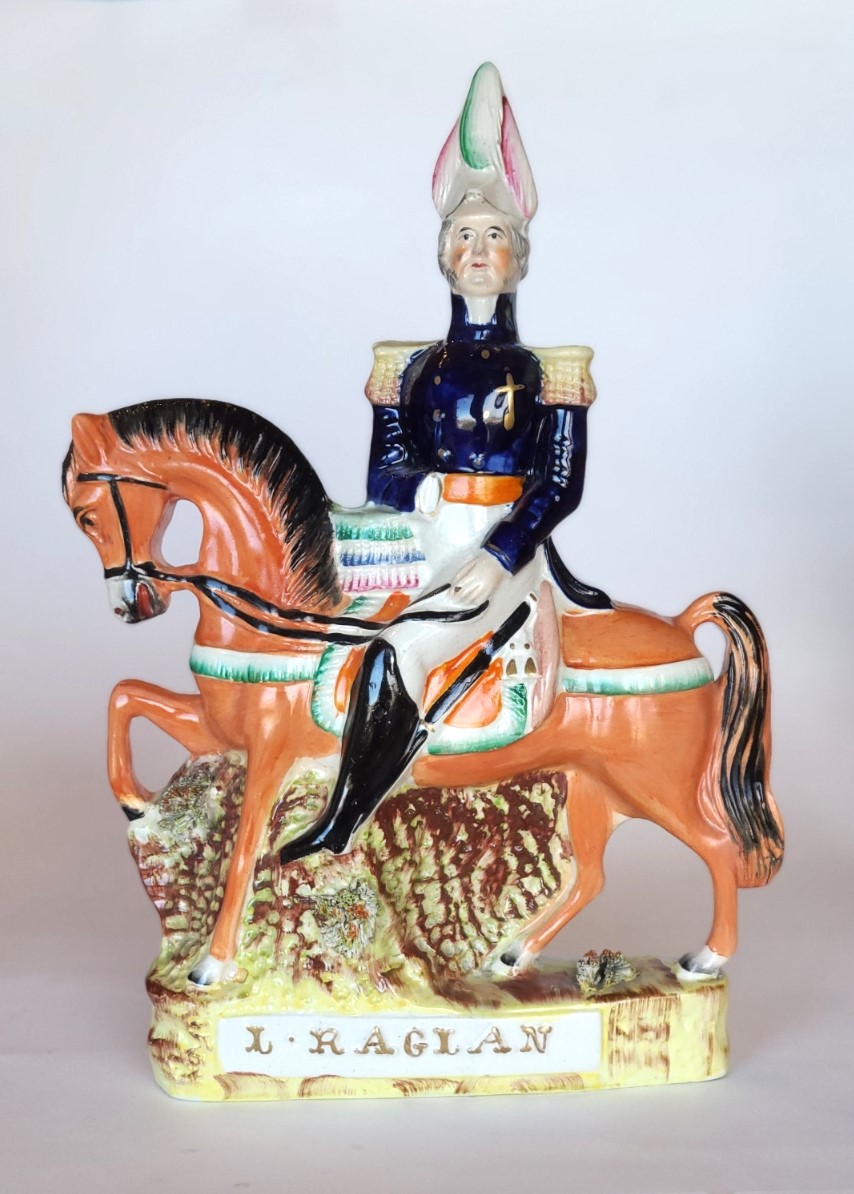
Field Marshal Fitzroy Raglan
This is a rare figure of Field Marshal Fitzroy Raglan. The figure stands about 12 1/4” tall and dates to about 1854.
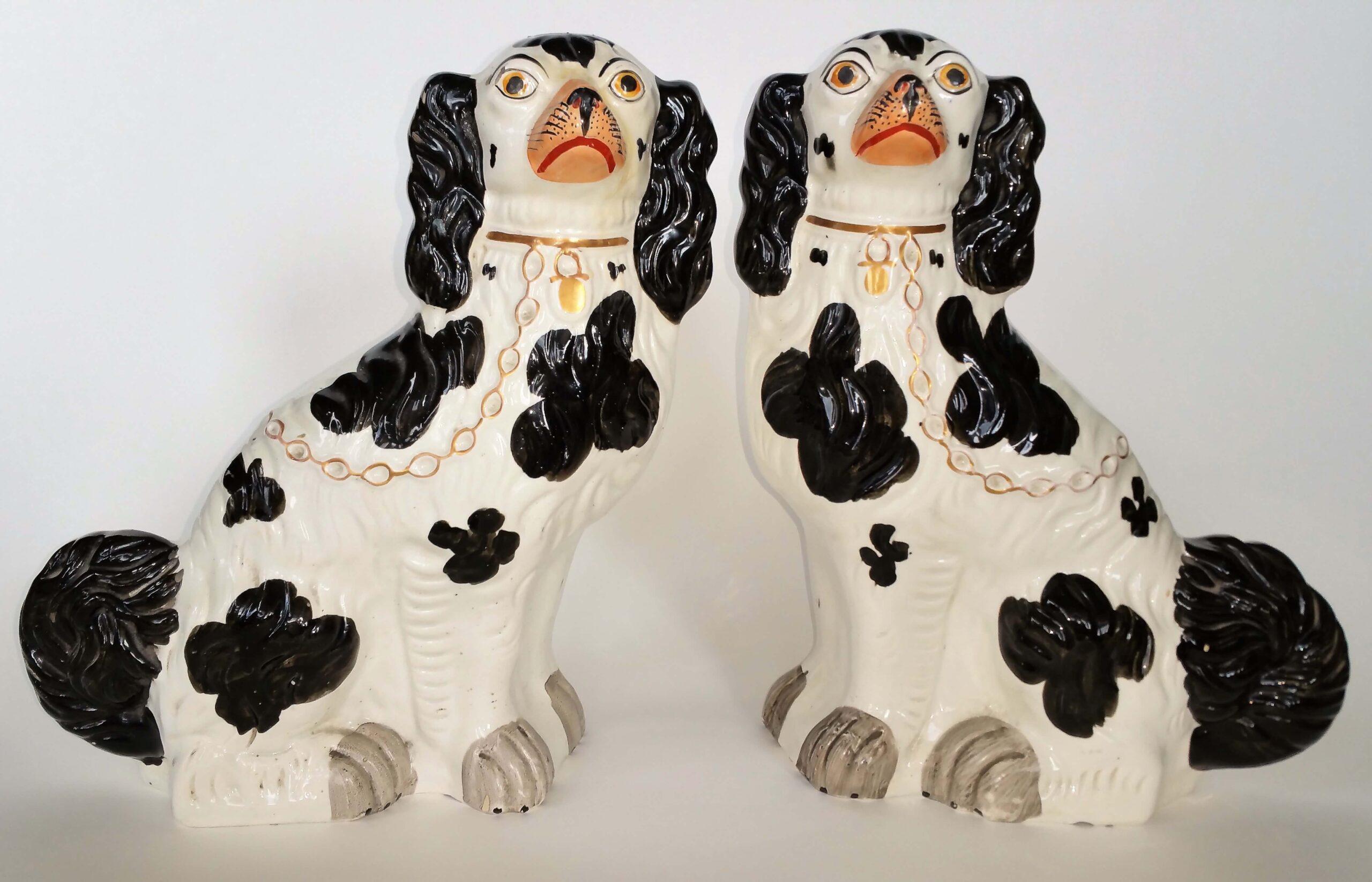
Black and white spaniels
This is fine pair of #1 black and white Staffordshire spaniels. They have a raised number one on the underside, designating them as the largest in a series of six sizes, number six being the smallest.
Membership
We warmly welcome new members – join us for free!
Wherever you are in the world, whether you are an experienced collector, a researcher interested in the folk art of England, or just someone who is intrigued by Staffordshire figures, please join us and get the rest of this year for free! Stay with us next year and pay an annual fee of £45 / $50 per household in January.
